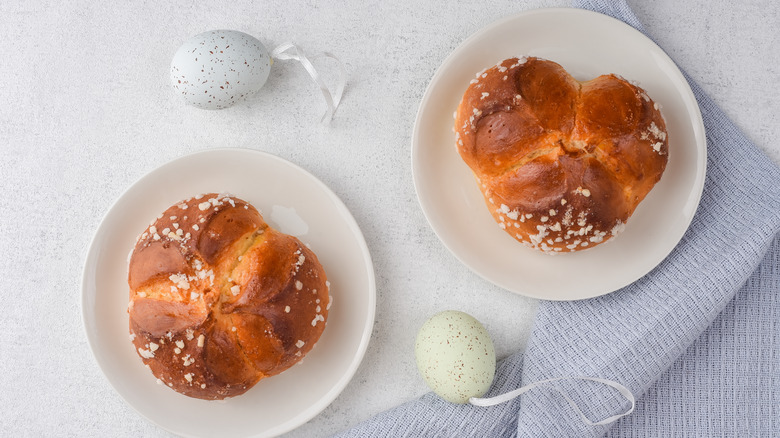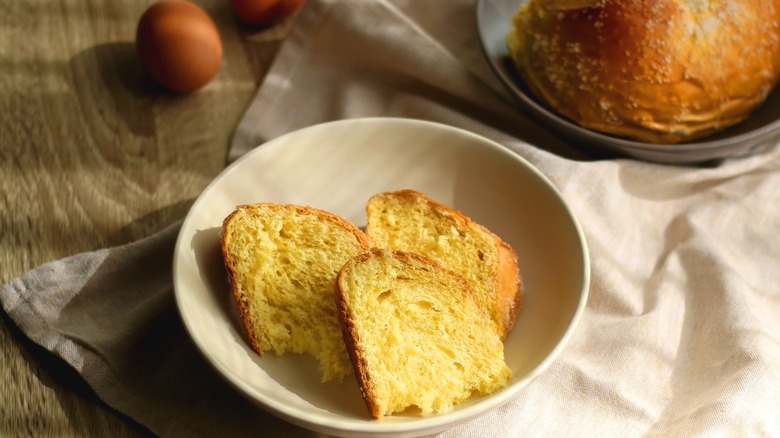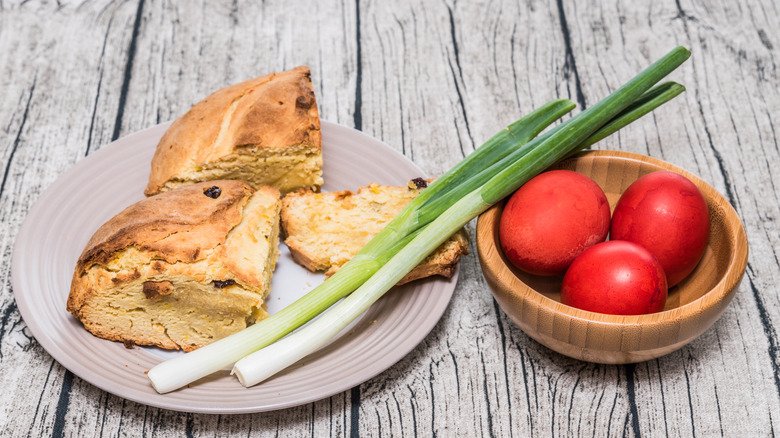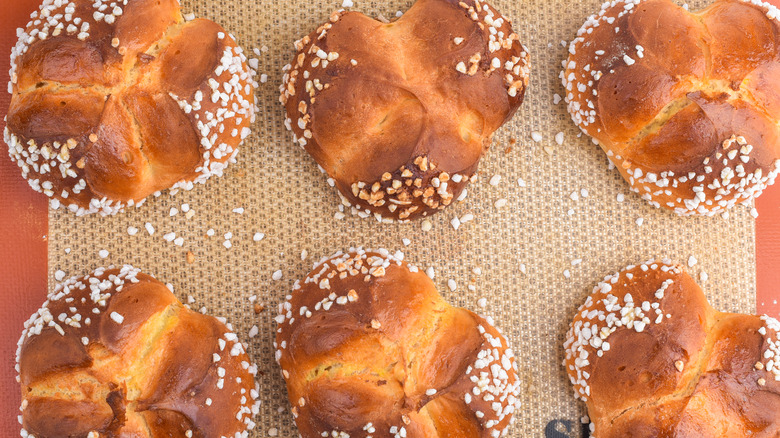Pinca: Croatia's Traditional Easter Sweet Bread
Lent, the roughly six-week lead-up to Easter, is commonly a period of abstinence from indulgences like chocolate, meat, or buttery, glutinous bread. The Easter celebration is all about welcoming back some of these treats, with a particular focus on the bread. Almost every European culture has its own version of an Easter sweet bread, from the cylindrical Russian kulichs to braided Greek tsoureki to British hot cross buns. But there's one soft Easter bread with a light crumb and golden crust that you may not have heard of: Croatia's pinca.
Fluffy and typically topped with sugar, pinca is marked by a singular cross or y-shaped slash. Alternatively known as sirnica in Dalmatia, it has a long and rich history that spans from the Alps of Northern Italy to the brilliant blue Adriatic coast of Croatia. So what sets Pinca apart from other Easter bread? And how did it come into being?
The history of pinca
To find the origins of Croatian pinca, it's best to look at the etymology of the word. Pinca first came to Croatia via Italy, taking inspiration from their version, known as pinza. This means "nippers or pliers" in Italian, referring to how the loaf is snipped (or pinched) to create the cross design on top. The wealthy Republic of Venice once controlled much of the Croatian coast, so many Italian culinary traditions passed to the country through this relationship. And what of the Dalmatian word for pinca, sirnica? Though the word sirnica has often been associated with the word sir, which means cheese in Croatian, others claim it refers to the Croatian word for ferment, usiriti, as the loaf is traditionally made with a sourdough starter.
Pinca is traditionally served with the Sunday Easter feast of spring onions, dyed red eggs, ham, asparagus, and other rich cakes.
The rich ingredients of pinca
Pinca derives its distinct yellow color from the numerous egg yolks used in its preparation. It is also enriched with butter (or sometimes lard) and sugar, giving it similarities with other enriched breads such as brioche and challah. Enriched breads require a longer rise time, as the heavy fat weighs down the dough during the fermentation process. Two hours of a bulk rise followed by two hours of a final proof are typical for pinca. Because of how long it takes to prepare, one Croatian tradition around pinca is to make the dough on Saturday, then bake it on Easter Sunday.
The predominant flavoring is citrus, usually a blend of orange and lemon, but this is complemented by an abundance of warm spices like cardamom and cinnamon. For a more complex pinca, adding raisins to the dough — soaked in rum for something boozy or rosewater for a floral touch —are a great addition.
For more modern recipes, the ingredients can be flexible. You can use butter rather than lard, as both work well, and you can use commercial yeast if you find sourdough starters too fussy. But do try and get your hands on real Croatian rum or their famous rakija, as that brings a true taste of authenticity to your loaves.
How to make your own pinca
In Croatia, every household has its own family recipe for pinca so there are plenty of variations for you to try. To make your own you'll need only a few ingredients but plenty of time and patience. Your pinca will require a good amount of kneading, as forming the gluten structure takes more time than with lean doughs. It's best if you use a stand mixer, but you can make it by hand if you're willing to put your back into it.
The final step in making the bread is slashing an all-important cross into the dough. Alternatively, some bakers carve a "Y" shape to symbolize the holy trinity of the church. This has a double purpose, helping steam release from the bread and increase its rise, and working as a symbolic reference to Easter. As a final note on patience, you have to let your pinca cool completely before slicing into it. Otherwise, you'll release a bunch of steam and ruin the soft texture of your loaf.
This Easter, consider making pinca as a way to honor the history of Croatia and celebrate the return of sweet, buttery bread.



